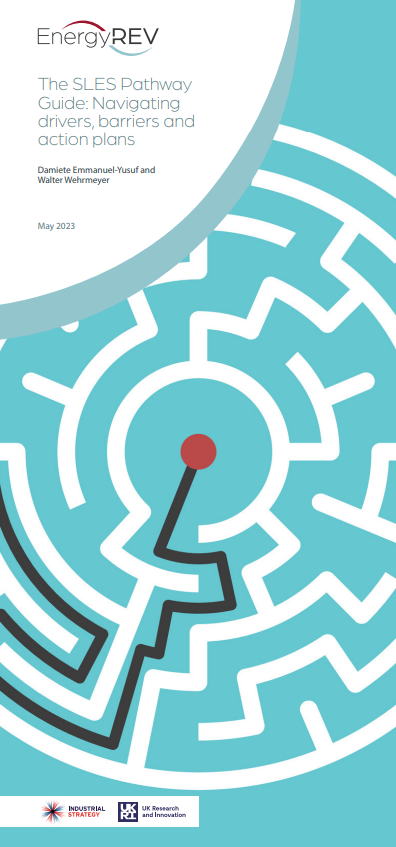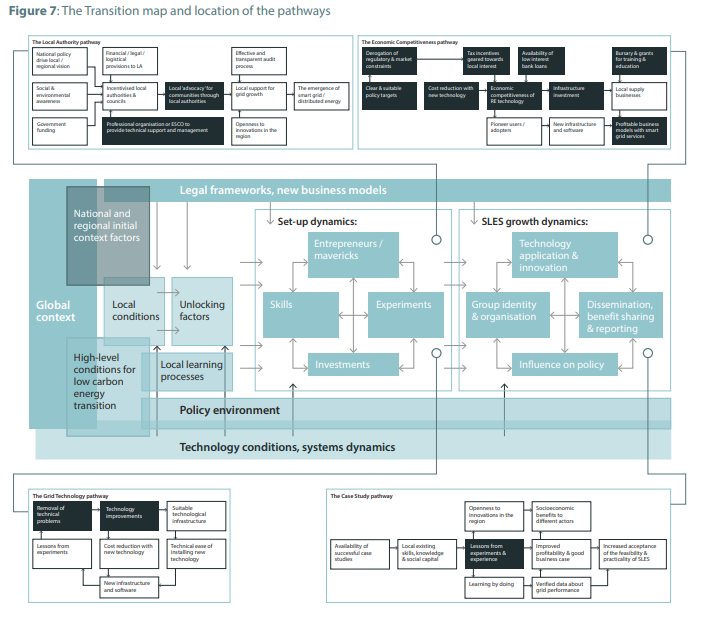The upscaling of Smart Local Energy Systems (SLES) is regarded as a key avenue to realise the UK’s Net Zero future. This guidebook presents the SLES pathway tool, which is designed for stakeholders, as well as present or future SLES actors, who wish to establish and upscale their systems.
 The upscaling of Smart Local Energy Systems (SLES) is regarded as a key avenue to realise the UK’s Net Zero future. This is because increasing the deployment of SLES that use information/communication technologies (ICT) and automation to integrate, optimise, and manage local energy systems, will significantly contribute to climate change mitigation, enhance energy security, and improve access to local and affordable energy.
The upscaling of Smart Local Energy Systems (SLES) is regarded as a key avenue to realise the UK’s Net Zero future. This is because increasing the deployment of SLES that use information/communication technologies (ICT) and automation to integrate, optimise, and manage local energy systems, will significantly contribute to climate change mitigation, enhance energy security, and improve access to local and affordable energy.
This guidebook presents the SLES pathway tool, which is designed for stakeholders, as well as present and future SLES actors who wish to establish and upscale their systems. It accompanies an earlier report, Pathways for the upscaling of smart local energy systems. Developed by WP6.1 of the EnergyREV consortium, the tool explores the pathways in more detail and then provides guidance on the avenues by which these pathways can lead to the upscaling of SLES.
The guidebook is structured into two parts:
Part 1 first provides an overview of the research that underpins the pathway tool. Secondly, the transition map, the four key pathways, and their hybrids are briefly described, as well as the location and function of each key pathway in the map.
Part 2 presents the pathway tool, which is a conceptual flow diagram that depicts the underlying drivers and barriers for each pathway and recommends action plans, categorised into different aspects of the system and actors that should collaborate and facilitate pathway progress and hence the upscaling of SLES.

